What it's like to have the fastest internet in the country
Tearing up my neighborhood in the name of speed.

I've been accessing the Internet since the days of BBS and dial-up modems. Before DSL and cable were available, staying online meant being careful not to pick up the phone, since it would disconnect you. Sometimes I miss hearing the dial-up tones. Call me sentimental.
Comcast made waves in 2015 when it announced that it would launch a 2-gigabit fiber service called Multigig—now called Gigabit Pro. I wanted it. Truthfully, I had been calling Comcast for about a year. Each month, I'd ask if Comcast had made fiber available in my area. I live in south San Jose, California, and it was one of the cities on Comcast's deployment map. Despite that, I wasn't ever told which area of San Jose, or when.
A month and a half ago, I called into Comcast's offices to get an update on the company's deployment of fiber Internet service. The rep told me, "Yeah, it looks like fiber is available now in your neighborhood." I replied, "I want it right away."
After agreeing to the terms and the setup fee of $1000, Comcast told me it would take up to eight weeks to actually get the service up and running. It could be a lengthy process, as they needed to complete a survey of my house, plan the fiber run, apply for permits if necessary, and then perform the actual construction.
The survey was quick and painless. The technician wanted to know where the fiber would be terminated, and where it would run. A week after the survey, a small construction crew came out to my street to inspect the existing lines. I was given bad news. All the existing cables around my block were running straight through dirt without conduits. This wasn't acceptable as fiber needs protection against the elements. Construction would be required.
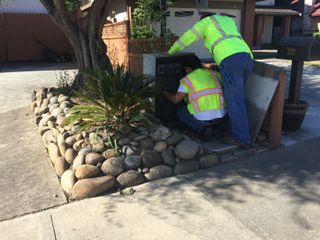
The construction would take several days, and it was likely that they would have to apply for a city permit to do the underground drilling. I was a bit taken back, but whatever; if it meant I could get a high quality fiber line, just do what needed to be done.
Construction started a week later with finding out where exactly to run the conduits. Streets were marked up with paint in order to identify where existing electrical and gas lines were running. You don't want to accidentally hit a gas line while drilling.
Comic deals, prizes and latest news
Sign up to get the best content of the week, and great gaming deals, as picked by the editors.
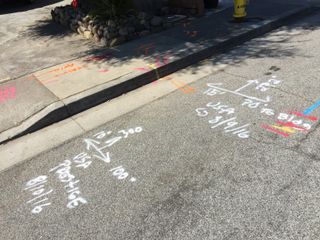
Several days after the street markings, the big crew moved in. And when I say big, it was a full-on construction crew of 12 people with the kind of heavy machinery I dreamed of playing with as a kid. Sorry, neighbors, I need my fiber fix!
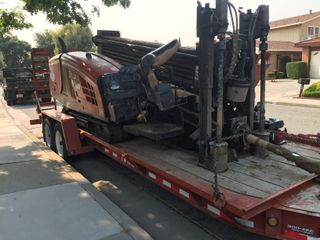
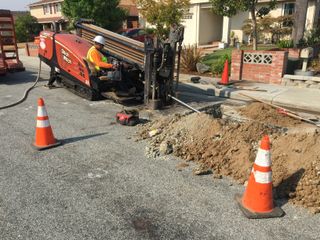
To actually get the conduit through the earth, they used a mammoth directional drill, where they can control the bore trajectory and arc. One person sits in the drill vehicle and another carries a device along the path of the drill. The monitoring device allows the techs to see where the drill is heading and make directional adjustments. As the drill head turns, nozzles spray water forward, softening and lubricating the surrounding dirt.

What about the actual conduit? It looks like this:
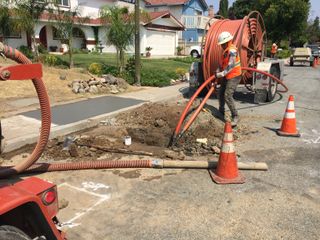
After drilling to the target destination, the conduit is attached to the drill head and pulled back through the cavity. The crew used about 500m worth of conduit, and when all was said and done, it took the crew three full days, multiple holes in the ground, several trenches, and smashing up the side of my driveway in order to get the conduit to my house. There was no hiding the fact that all of this construction was for my address, but thankfully there were no eggings in retaliation. Score one for civilization.
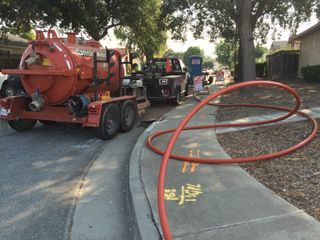
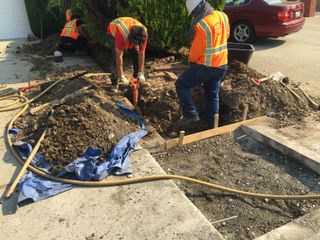
That's a lot of work for a single home, but a fiber junction box was installed in the ground right next to my driveway. It houses the fiber splitter node, which allows two other homes around me to tap in and get their own fiber lines. That's not very cost effective, but in all honesty, I'll probably be the only one in the neighborhood with fiber, for a long time.
On to page 2.
Most Popular




